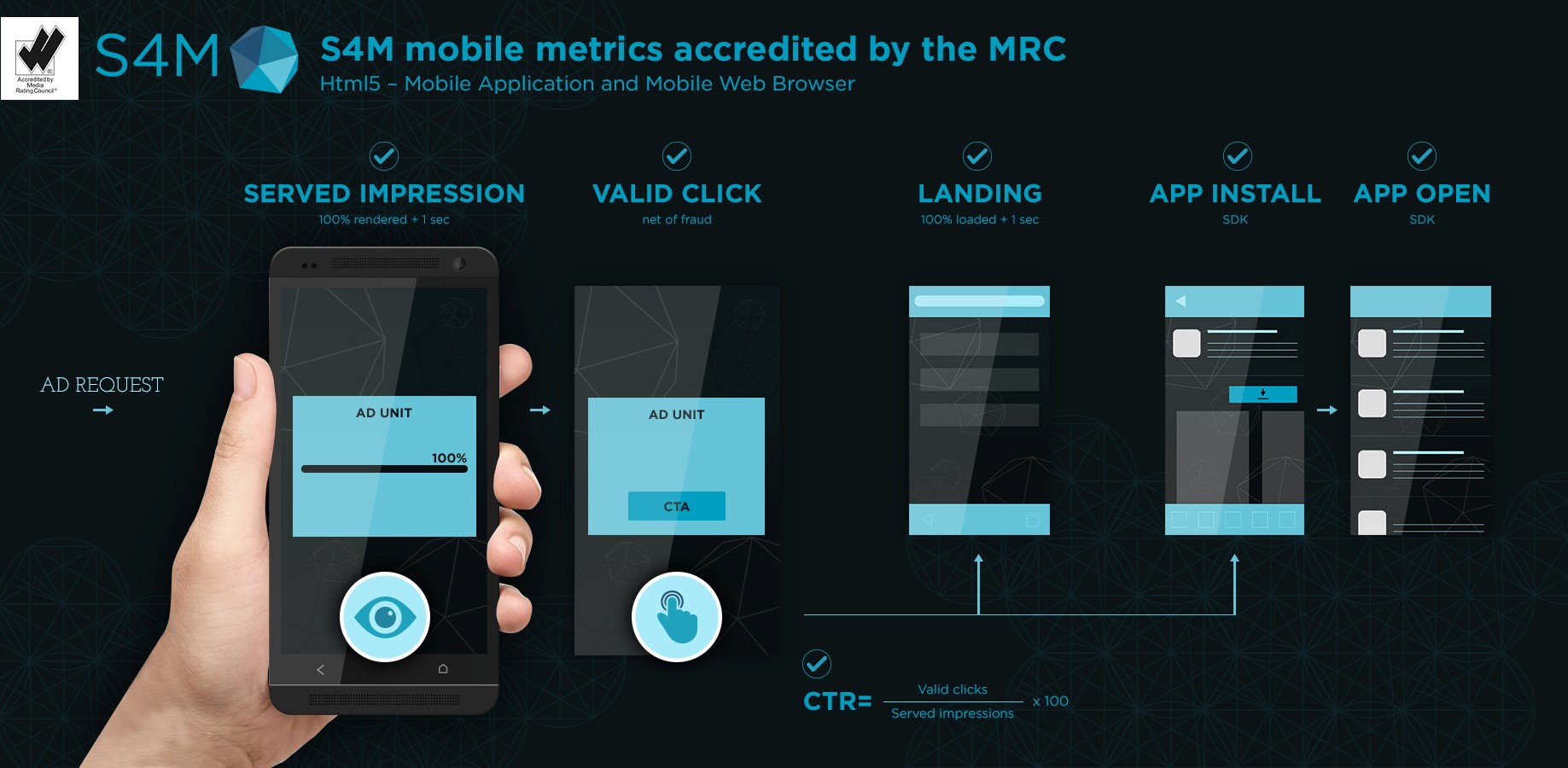S4M – Winning the Fight Against Ad Fraud
- Monday, March 27th, 2017
- Share this article:
 Transparency is critical if the mobile programmatic industry is to evolve and mature, says Christophe Collet, CEO of S4M
Transparency is critical if the mobile programmatic industry is to evolve and mature, says Christophe Collet, CEO of S4M
In today’s hyper-connected reality, advertisers are seeking the most effective channels to follow and engage with their individual consumers, hence a major shift towards the mobile channel. The Advertising Association (AA) reports that mobile ad spend will grow at 23.4 per cent and account for almost all the growth in online advertising this year while growth for non-mobile ad spending remains flat.
British advertisers are ranked third globally in media ad spend per internet user, and Britain is the largest market in Western Europe, valued at £9.02bn, with 27 per cent of this budget going into the mobile channel. However, in a study we conducted last year looking at more than 80 mobile campaigns, we found that an estimated 30 per cent of these investments are lost to ad fraud.
Realistically, the current level of fraud detected by the industry is calculated based on a sample amount of impressions, so eMarketer goes even further to speculate that the true impact of fraud could be up to four times higher than reported figures.
Sophisticated fraudsters
As increasing investments flow into mobile, more incentives arise for even more sophisticated fraudsters who also want a part of the pie. Every stakeholder in the ecosystem should play a role to push for more transparency, and ultimately, a sustainable future for the mobile programmatic industry.
Advertisers and technology providers need to adopt metrics that cannot be falsified and set a new currency for the industry to deliver assured ROIs and safeguard the mobile user experience. That’s why, at S4M, we created a new buying model, the Cost per Landing Page, to guarantee user engagement in mobile campaigns. With this buying model, advertisers can be sure they are paying only for users that have arrived at a landing page or in app that has fully loaded, and have stayed there for more than one second.

Advertisers are in the best position to demand new currencies, redefine what they are paying for and finally, refuse to buy traffic with little visibility behind the data. Both buyers and sellers have a key role to play in combatting fraudsters. Buyers should not rely solely on vendors as the only source of fraud detection. Choosing a vetted third-party vendor, with MRC (Media Ratings Council) accreditations for example, is only the very minimum.
Often, advertisers are not able to verify the vendors’ data and do not have enough visibility on sources of fraud, so they could be setting KPIs based on past campaign results with fraud included. This is why at S4M, we guarantee that advertisers retain complete ownership of their campaign data and insights. So, advertisers can take the time to deep-dive into campaign reports and apply common sense to flag figures that don’t add up.
User engagement metrics
True impact on investments should be metrics based on user engagement, such as app installs, dwell time, and scroll pages. At S4M, for certain mobile formats, like the 3D cube, we provide precise user engagement insights, such as the number of swipes made by each user. Advertisers need to push for transparency in their programmatic supply chain, buying models, and data, specifically regarding data sources and ownership, because privacy is what end users value most.
The short-term consequences of ad fraud are costly, and could eventually deter more investments into the sector and impede more innovation and new technologies. Long-term effects include future campaign strategies that are based on past performance results including fraudulent traffic. Continued ad fraud also directly hinders the mobile user experience, resulting in things such as irrelevant and excessive ads, slow page load times, and malware concerns that encourage consumers to adopt ad blockers. These grave long term effects are much more difficult to recover from than just wasted media-buying budgets.
Hope is not lost, however. Buyers and sellers must work together as partners to deter fraudsters and guarantee the best mobile user experience by transforming mobile advertising to deliver more transparency for the industry.
Advertisers may need to face the fact that they have bought fraudulent traffic in the past and work with accredited vendors to establish new benchmarks against fraud for better campaign performance visibility. Likewise, sellers have a duty to share information and help buyers understand when metrics can be easily falsified, instead of selling fluffy metrics for quick wins. With more transparency, the mobile programmatic industry has the best chance for a sustainable and effective future.
Christophe Collet is CEO of S4M

















